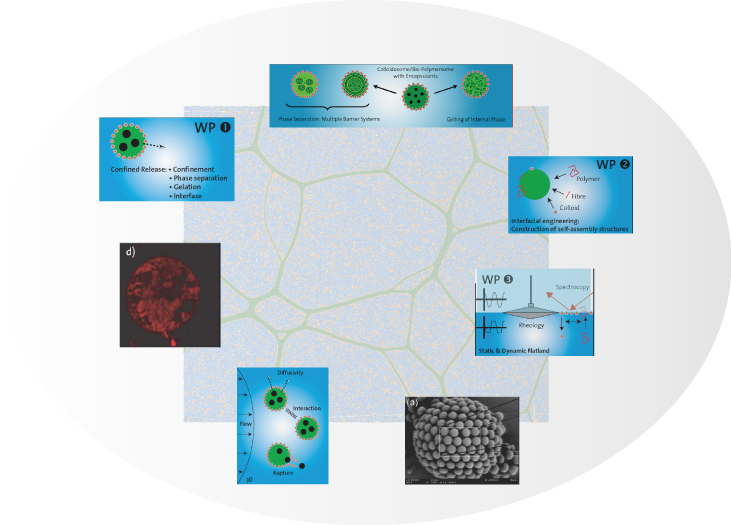
New controlled release systems produced by self-assembly of biopolymers and colloidal particles at fluid-fluid interfaces
| Magnetic fields were applied as a Structuring force on phospholipid-based vesicular systems, using paramagnetic lanthanide ions as magnetic handles anchored to the vesicle membrane. Different vesicle formulations were investigated using small angle neutron scattering (SANS) in a magnetic field Of Lip to 8 T, cryo-transmission electron microscopy (cryo-TEM), P-31 NMR spectroscopy, dynamic light scattering (DLS), and permeability measurements with a fluorescent water-soluble marker (calcein). The investigated vesicle formulations consisted usually of 80 mol % of the phospholipid 1-palmitoyl-2-oleoyl-sn-glycero-3-phosphocholine (POPC) and 20 mol % of a chelator lipid (DMPE-DTPA; 1,2-dimyristoyl-sn-glycero-3-phosphoethanolamine-diethylenetri-aminepent aacetate) with complexed lanthanide ions (Tm3+, Dy3+, or La3+), and the total lipid concentration was 15 mM. Vesicles containing the paramagnetic lanthanide Tm3+ or Dy3+ exhibited a temperature-dependent response to magnetic fields, which can be explained by considering the formation of lipid domains, which upon reaching a critical size become alignable in a magnetic field. The features of this "magnetic field alignable domain model" are as follows: with decreasing temperature (from 30 to 2.5 degrees C) solid domains, consisting mainly of the higher melting phospholipid (DMPE-DTPA . lanthanide), begin to form and grow in size. The domains assemble the large magnetic moments conferred by the lanthanides and orient in magnetic fields. The direction of alignment depends oil the type of lanthanide used. The domains orient with their normal parallel to the magnetic field with thulium (Tm3+) and perpendicular with dysprosium (Dy3+). No magnetic field alignable domains were observed if DMPE-DTPA is replaced either by POPE-DTPA (1-palmitoyl-2- oleoyl-sn-glycero-3-phosphoethanolamine-diethlenetriamine-pentaacetate) or by DMPC (1,2-dimyristoyl-sn-glycero-3-phosphocholine). [hide]
Scientific Board
Scientific Stuff
Associated Scientists |

|
Enjoy your reading
SY Tee, AR Bausch, PA Janmey, | |
Selected conferences (co-)organized by project members8th World Congress on Computational Mechanics WCCM8 200830 June - 5 July 2007, Venice, Italy ► |
13 May 2025
![]() mk
mk